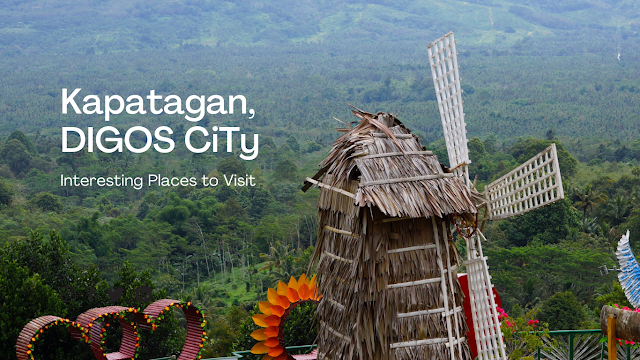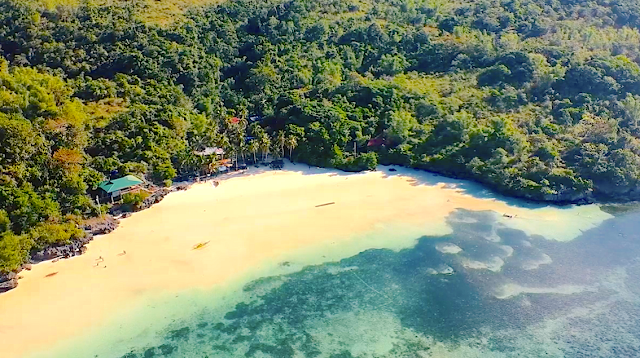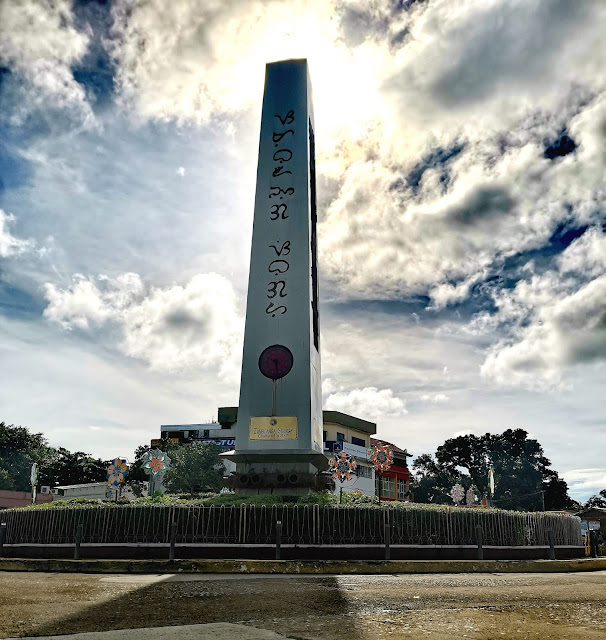Balingasag, Misamis Oriental
Balingasag Municipality is a second-class municipality in Misamis Oriental Province, Philippines. The city is being pushed for inclusion on the UNESCO list of World Heritage Sites for its impressive variety of colonial buildings with touches of Mindanao's indigenous architecture.
According to the census 2020, the municipality has a population of 74,385 inhabitants representing 7.77% of the total population of Misamis Oriental province or 1.48% of the total population of the North Mindanao region. After that, the population density is estimated at 506 inhabitants per square kilometer or 1310 inhabitants per square mile.BRIEF HISTORY
Balingasag began as a pre-Hispanic settlement that was eventually discovered by the Spanish when they colonized the Philippines. Legend has it that one day during the Spanish regime, a group of Civil Guardsmen while patrolling the coast near the native settlement, chanced upon some fishermen pulling their fishing nets.
A civil guard asked a fisherman the name of the place which constantly terrorized the residents. One of the notorious groups that roamed the area was the Datu Gumpot, who now occupied the area byGumpot's group then disappeared and never returned. However, a group moved to Galas, part of the town. The other group stayed in Gumpot Kitagtag.
The other group stayed in Gumpot Kitagtag. Galas was ruled by Datu Marcos and his wife Ba'ai Gregoria. On the other side was Gumpot Kitagtag under Datu Mateo and his wife Ba'ai Tomasa. Marcos Antonio became the Datu de Galas and Manuel Mateo ruled Gumpot Kitagtag. At one of their meetings, the idea was born to create a common place where members of their tribes could meet and carry out commercial or social activities.
In 1749 the Spanish authorities recognized the place and the whole area of Sabangan under the name of Balingasag. This time, after the flood, the leader of Galas, Datu Antonio Ramón, son of Datu Marcos Antonio, suggested to his followers that they move their settlement to a safer place. Datu Antonio Ramón and his followers saw Gumpot Kitagtag, now under the control of Datu Mamerto Manuel, son, and successor of Datu Manuel Mateo, as the ideal place to relocate.
All land on the right side of this road, facing the mountain, and all agricultural land up to Baliwagan, to Datu Antonio Ramón and his followers. Datu Mamerto Manuel and his followers owned all the land on the other side of town and all the farmland up to Mandangoa. Consequently, Datu Mamerto Manuel chose "Valmores" as his surname, while Datu Antonio Ramon chose "Madroño".
In 1842, Balingasag finally received official recognition as a city by Spanish royal decree. Due to the existence of what is now Balingasag, Mamerto Manuel Valmores and Antonio Ramón Madroño would then be considered the "founding patriarchs" of this community. The royal recognition of Balingasag as a political or administrative entity under Spanish sovereignty brought about new systems and structures of government that supplanted indigenous methods of managing community affairs. Mamerto Manuel Valmores was appointed the first Gobernadorcillo of the city of Cillo in 1820. He held this office for about 16 years (1822-1837).
Manuel can be considered the Gobernadorcillo with the longest tenure. New leaders emerged as changes occurred in the Philippine government. Faustino Vega, the first municipal mayor of the Philippines, was the first municipal mayor of the Philippines. Recently elected city mayors have included Manuel Varquez; Alejo E.Abogado, daughter of the former mayor Porferio Roa, took over the highest position of the city on June 30, 2016.
List of 30 Barangays in Balingasag
- Baliwagan
- San Francisco
- Binitinan
- Blanco
- Calawag
- Camuayan
- Cogon
- Dansuli
- Dumarait
- Hermano
- Kibanban
- Linabu
- Linggangao
- Mambayaan
- Mandangoa
- Napaliran
- Barangay 1 (Poblacion)
- Barangay 2 (Poblacion)
- Barangay 3 (Poblacion)
- Barangay 4 (Poblacion)
- Barangay 5 (Poblacion)
- Barangay 6 (Poblacion)
- Quezon
- Rosario
- Samay
- San Isidro
- San Juan
- Talusan
- Waterfall
Tourism
Vega Ancestral House - placed withinside the Poblacion district, is a preserved Philippine colonial residence that has been visited by country-wide leaders like General Emilio Aguinaldo and President Sergio Osmeña, and Gura - Vergara residence that turned into mounted 1878. It turned into wherein then Inday Badiday, former showbiz anchor, lived as she turned into from Balingasag.
| List of Anscestral House | Location/ Street | Town/ Municipal |
|---|---|---|
| Abuzo House | 849 Valmores St. | Balingasag |
| Acantilado House | F. Vega corner Mabini Sts. | Balingasag |
| Albason Roa House | Ludeña cor. Tres Martires Sts. | Balingasag |
| Almendrala Ancestral House | Tres Martires cor. Olano Sts. | Balingasag |
| Amparo Valmores-Roa House | 15 de Setiembre St. | Balingasag |
| Anastacio Bablera, Sr. House | Tres Martires cor. Capili Sts.. | Balingasag |
| Antonio Buzun House | 15 de Setiembre St. | Balingasag |
| Apolonio Kalaga Gamolo Ancestral House | 50 M. E. Mundo St. | Balingasag |
| Apolonio Pabelonio House | Varquez St. | Balingasag |
| Bahica House | Tres Martires cor. Capili Sts. | Balingasag |
| Valdehueza House | Ludeña cor. Mabini Sts. | Balingasag |
| Catholic Cemetery | J. P. Roa St. | Balingasag |
Balingasag Central Elementary School |
Lopez Jaena St. | Balingasag |
| Barretto House | Cailing St. | Balingasag |
| Bautista-Roa House | Cailing cor. Malvar Sts. | Balingasag |
| Beneta Fernandez Ancestral House | 10 Valmores cor. Seriña Sts. | Balingasag |
| Cubillo-Luardo Maternity Clinic | Rizal cor. Varquez Sts. | Balingasag |
| Delos Reyes House | Varquez St. | Balingasag |
| Delos Santos House | Varquez St. | Balingasag |
| Dr. Lino M. Seriña House | Valmores cor. Regalado Sts. | Balingasag |
| Nemesio and Ciriaca Vega's Residence | Ludeña cor. Regalado Sts. | Balingasag |
| Emeterio Moreno Ancestral House Ludeña | cor. Roa Sts. | Balingasag |
| Emilio Domo Ancestral House | M. E. Mundo cor. Varquez Sts. | Balingasag |
| Gervacio Gamolo Sr. Ancestral | House Cailing cor. Seriña Sts. | Balingasag |
| Fructuoso Ebcas House | M.E. Mundo cor. J. P. Roa Sts. | Balingasag |
| Soliva House | Madronio St. | Balingasag |
| Go House | F. Vega cor. Seriña Sts. | Balingasag |
| Go King House | F. Vega cor. Varquez Sts. | Balingasag |
| Gora & Vergara Ancestral House | F. Vega cor. Varquez Sts. | Balingasag |
| Hermogenes Sabugan House | F. Vega cor. Mabini Sts. | Balingasag |
| Ignacio Valmores House | 105 Cailing cor. Varquez Sts. | Balingasag |
| Inguito House | M.E. Mundo cor. Malvar Sts. | Balingasag |
PROFILE SUMMARYCoordinates 8°45′N 124°47′E Economy• Income class 2nd municipal income class• Poverty incidence 20.15% (2018) • Revenue ₱265,746,434.04 (2020) • Assets ₱706,877,714.51 (2020) • Expenditure ₱211,169,006.77 (2020) • Liabilities ₱205,942,719.30 (2020) |









